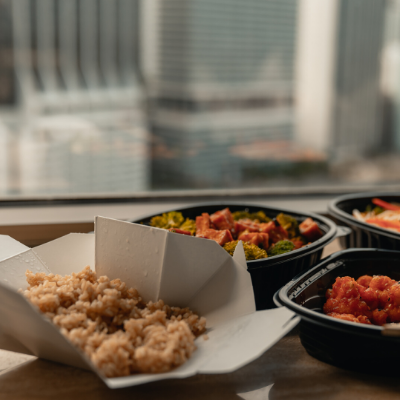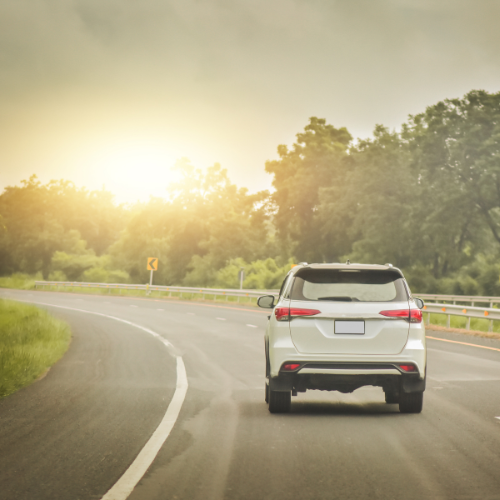
In this month’s newsletter, you’ll read about medicine cabinet essentials. In addition, learn about dangerous driving habits to avoid and tips for safely ordering food takeout or delivery.
Download the full version of this Personal Insights Newsletter
HOME
Medicine Cabinet Essentials
When it comes to illness or accidents in your home, it’s important to be prepared with a well-stocked medicine cabinet. That way, you’ll be able to respond quickly to help yourself or others when sickness or injury strikes. Consider keeping the following 10 items on hand for emergencies:
1. Antacids—These can provide quick relief when you’re suffering from heartburn.
2. Antibiotic ointment—A topical ointment can help heal cuts, scrapes and minor burns. Petroleum jelly may also do the job.
3. Antihistamine—Both oral antihistamines (liquid and pill form) and hydrocortisone cream can treat hives, itching and other allergic reactions.
4. Bandages—Adhesive bandage strips of all sizes, plus plenty of gauze pads and medical tape, can ensure you’re prepared to dress most cuts, scrapes and burns.
5. Cough medicine and decongestants—You won’t want to leave home to go to the drugstore for cold and flu medication when you’re feeling sick.
6. Hydrogen peroxide—Unlike rubbing alcohol, which can sting, hydrogen peroxide is a good antiseptic to have on hand for cleaning wounds. Cool water with mild soap is another option.
7. Instant cold compress—A bag of peas from the freezer can also work to numb pain, reduce swelling and limit bruising.
8. Painkillers and fever reducers—Aches and pains are inevitable, and these staples are likely already in your home. Acetaminophen and ibuprofen can reduce pain, inflammation and fevers, while aspirin can help alleviate pain and heart attacks.
9. Thermometer—For quick and accurate results, use a digital thermometer or the kind you apply to your forehead or in your ear.
10. Tweezers—A pointy pair can come in handy for removing splinters or ticks.
While you’re stocking the medicine cabinet, toss expired items as well. Make this a habit, and try to clean and restock every three months so you’re always prepared.
For serious conditions or emergencies, contact a medical professional for advice.
Fire Pit Safety Tips
Whether you already have a fire pit, are planning to add one or just purchased a portable one, it’s important to review safety tips to enjoy a safe summer.
Start with selecting the right site—one with level ground. Keep fires at least 10 to 20 feet away from plants, your home or other structures that could catch on fire. Look above to make sure the fire is not under an overhang or overhanging trees. Sparks fly, and you could end up with a larger fire than you were expecting.
Only burn wood that’s been seasoned. Avoid plywood or other construction materials that could release toxic fumes. Most importantly, never use gasoline to start your fire.
Before lighting any fire, check your local fire regulations. You may need to obtain a burn permit or follow burning restrictions during wildfire season.
When you’re done enjoying your fire, extinguish it properly with water. Gently stir it with a shovel or other tool, and spread the ashes to cool. Once they’re cool to the touch, you can leave the site. It’s a good idea to keep a fire extinguisher, garden hose or bucket of sand nearby in case the fire gets out of hand.
AUTO
Dangerous Driving Habits to Avoid
Car accidents continue to be a leading cause of injury and death in the United States. Even the most experienced drivers can make dangerous mistakes on the road. Stay safe by avoiding the following habits:
- Distracted driving—Texting while driving is likely the first example that pops into your head. Distracted driving is caused by any actions that take your eyes or mind off the road, including eating, adjusting the radio or engaging in intense conversations.
- Drowsy driving—According to the National Sleep Foundation, drowsy driving is similar to driving while intoxicated. Drowsy-driving accidents tend to occur between 11 p.m. and 8 a.m. If you find yourself consistently feeling tired behind the wheel when it’s dark out, try to avoid prolonged periods of night driving. Because of your body’s biological rhythm, this is a time when sleepiness is most intense.
- Impaired driving—Drugs and alcohol impair judgment and perception, increase reaction time and reduce coordination.
- Reckless driving—You’re more likely to cause an accident if your movements are drastically different than those of drivers around you. Reckless driving includes swerving, weaving in and out of traffic, passing on the right and driving too slow or fast based on the speed limit.
- Speeding—Try using your vehicle’s cruise control settings when driving on the highway. If you tend to feel rushed, leave a bit earlier than you need to.
WELLNESS
Tips for Safely Ordering Food Takeout or Delivery
During the COVID-19 pandemic, Americans have been advised to stay inside and to limit human contact. With nonessential businesses closed for the foreseeable future, many restaurants have transitioned to takeout or delivery only. To safely support local eateries, keep in mind the following:
- Request contactless delivery, if possible, to have your meal left on your doorstep, porch or in your building’s lobby.
- Maintain as much distance as you can between yourself and restaurant employees or other customers if you are picking up your carryout order.
- Use contactless payment to avoid handing over your credit card or cash.
- Plate your food immediately, or transfer it to another clean container. Discard delivery bags and containers, and avoid putting them in your fridge.
- Wash your hands for at least 20 seconds before sitting down to enjoy your meal. Remember to avoid touching your face after bringing food delivery inside. If you went out to pick up your restaurant order, consider washing your hands right away when you get home.
According to the Centers for Disease Control and Prevention and the Food and Drug Administration, there’s currently no evidence that COVID-19 can be transmitted through food or food packaging. If the food has been handled properly by restaurant employees, there is little chance of an issue. The bigger potential problem is transmission from a delivery person to a customer—or vice versa—through coughing or other direct contact.

Operation Safe Driver Week
Operation Safe Driver Week is an annual seven-day initiative created by the CVSA to help

7/17 Panel Recap & Financial Insights
Stepping into summer 2024, the insurance landscape continues to present challenges and opportunities for businesses

Employee Spotlight: Adam Knapp
Seubert welcomes Adam Knapp to the agency’s Commercial Lines Division as a Technical Account Manager.

